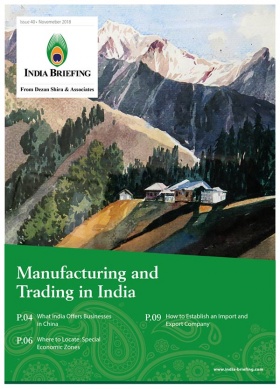India’s Electronics Manufacturing to Benefit from 3 Schemes Worth US$6 Billion
- India has allocated about US$6 billion to boost domestic manufacturing, and to attract investment and incentivize electronics and components manufacturing and exports in the country.
- This move was announced as a part of India’s ambition to become a US$1 trillion economy by 2025.
- If successful, India could become a key player in the global supply chain for electronics and mobile phones and its components.
The Prime Minister’s Cabinet has approved three key schemes worth INR 480 billion (US$6.3 billion) in a bid to boost domestic manufacturing as well as to attract investment and incentivize electronics and components manufacturing and exports in India.
The disruption in China’s supply chain due to COVID-19 has greatly impacted the manufacturing sector across the globe, and countries are now looking at alternative markets to diversify their sources of raw materials and spread out their manufacturing units. If India is able to position itself as a leading electronics manufacturing hub by providing key incentives and regulatory relaxations to foreign investors, it can enable the country’s entry into the global supply chain.
For instance, premium technology company Apple is not reportedly interested in shifting its production from China to India due to lack of supply chain and infrastructure, among other factors. If these schemes enable the growth of original equipment manufacturing (OEM) players in India’s electronics manufacturing industry, then large-scale companies will not be hesitant about moving in their operations.
Through these measures and schemes, India expects to create direct and indirect jobs for two million people in the next five years.
What are the incentives introduced under the new electronics manufacturing schemes?
Under the production-linked initiative (PLI), close to INR 410 billion (US$5.52 billion) has been approved to boost domestic production, and to attract investment in mobile phone manufacturing and specified electronic components including assembly, testing, marking, and packaging (ATMP) units.
According to media reports, “this scheme shall extend an incentive of four percent to six percent on incremental sales (over base year) of goods manufactured in India and covered under target segments, to eligible companies, for a period of five years.”
The remaining funds have been allocated to two schemes — scheme for promotion of manufacturing of electronics components and semiconductors (SPECS) and Electronics Manufacturing Clusters (EMC) 2.0. Funds allocated for both the schemes are spread over eight years.
SPECS will provide a financial incentive of 25 percent on capital expenditure for select electronic goods. This includes electronic components, semiconductor/ display fabrication units, and ATMP units. SPECS will be applicable on investments in new units and expansion of capacity and diversification of existing units.
EMC 2.0 scheme will be used to create industry specific infrastructure, such as common facility centers and ready built factory sheds, among others. The scheme will also provide financial assistance depending on the project cost.
India Briefing is produced by Dezan Shira & Associates. The firm assists foreign investors throughout Asia from offices across the world, including in Delhi and Mumbai. Readers may write to india@dezshira.com for business support in India.
- Previous Article COVID-19 in India: 5 Best Practices for Businesses Implementing Work-From-Home
- Next Article COVID-19 Lockdown in India: Top Tech Solutions for Businesses Working Remotely







